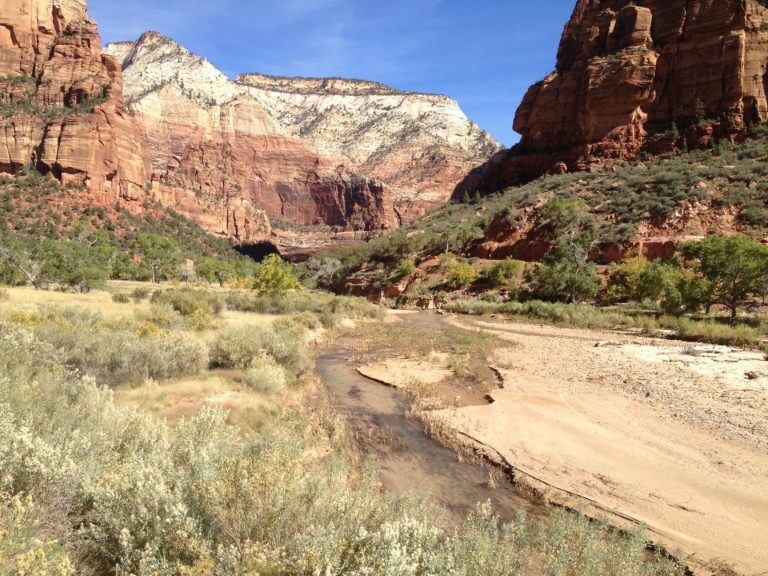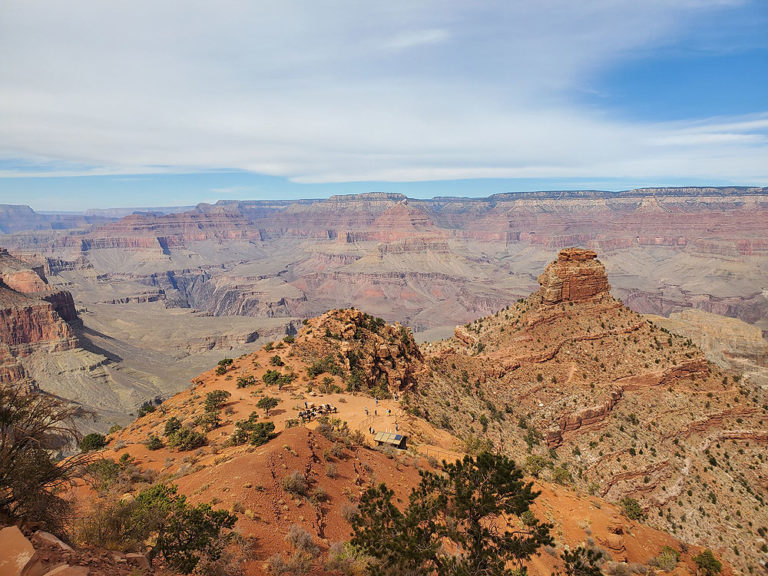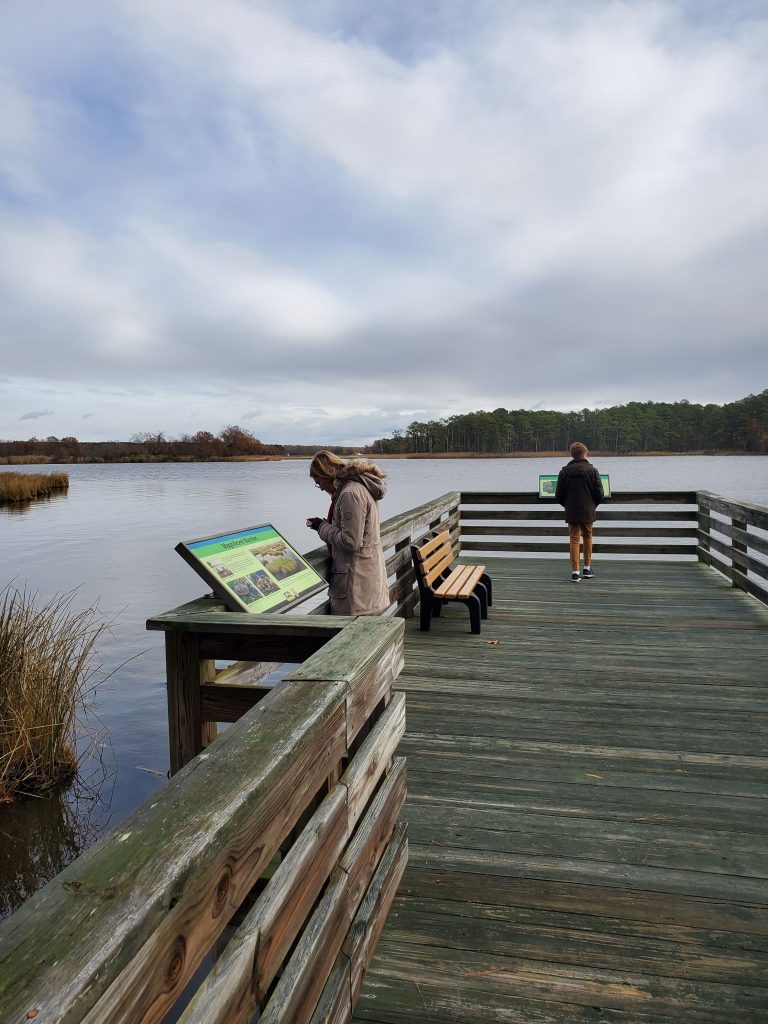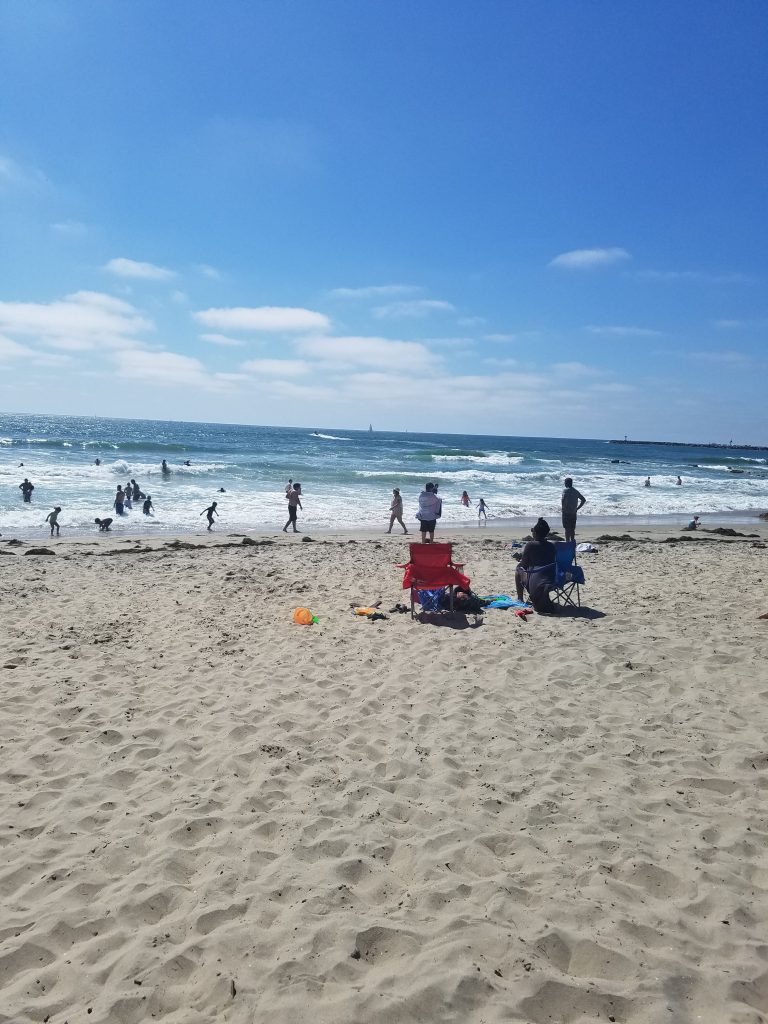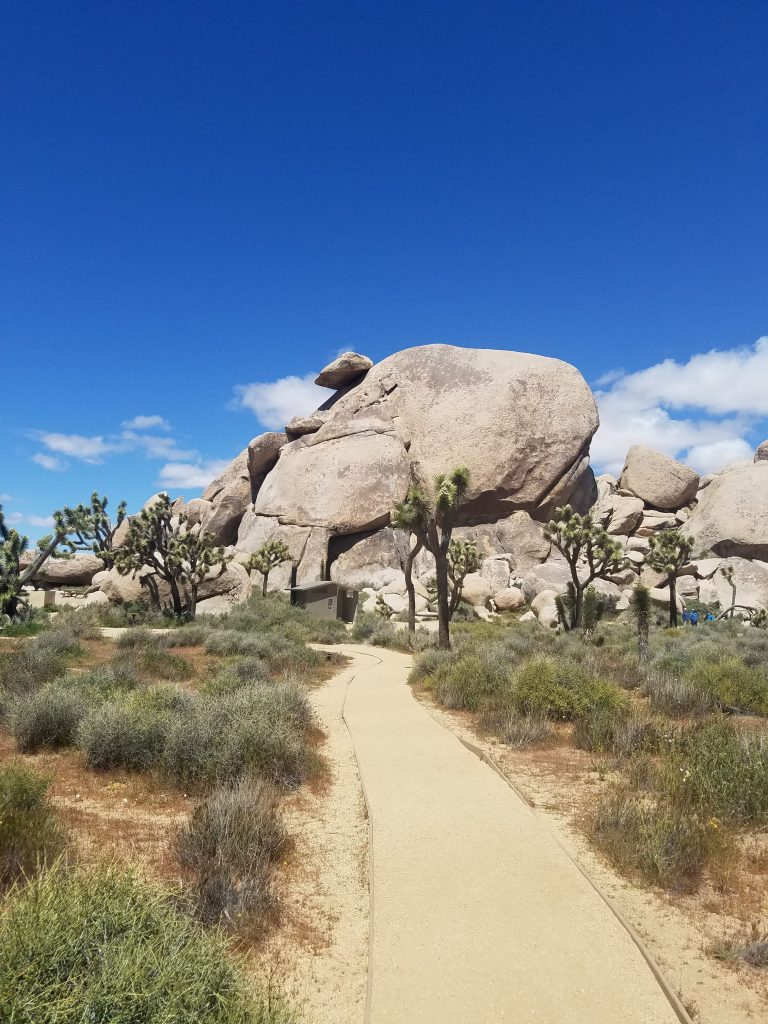Yosemite First-Time Visitor Tips
Yosemite National Park in California is rightly seen as one of America’s great attractions. It is a place of unsurpassed beauty with countless outdoor activities for all ages and skill levels. It is also the Disney of National Parks. Everyone wants to go. Proper planning is essential to avoid what could become a nightmare of a trip. This article contains Yosemite First-Time Visitor Tips designed to avoid common mistakes of the novice traveler.
Jump Ahead To
Yosemite First-Time Visitor Tips: Number 1: Know When To Go
Yosemite changes drastically over the year, both in terms of number of travelers and what sites are available. Fall and winter are great times to go, but first-time visitors need to be aware that the waterfalls will be mostly dried up by this time. For the first-time visitor May is far and away the best time to go. This is followed closely by the second half of April. Late March and the first part of April are often packed with spring break crowds.
The first two weeks of June can also be good times to go. However, after the second weekend of June the crowds are unbearable. In my mind, if you are looking to visit Yosemite Valley between June 15th and August 15th you are either a masochist or in denial. Yosemite is packed during those times and simply unbearable. After August 15th the crowds settle down as kids go back to school.
Of course, we realize many first-time visitors are families with children who are stuck traveling on weekends and holidays, most notably summer vacation. One bit of advice is to take the kids out of school in April or May. I am not advocating truancy, but instead suggesting a bit of home schooling. Yosemite is a wonderful educational opportunity with all kinds of learning about geology, ecology, Native American life and all kinds of insights that can not be taught in a classroom. Yosemite is a popular school field trip for San Diego schools. You should not feel bad about pulling your children out as they will learn more then they would sitting in a classroom.
For a great look at specific dates and the estimated crowds go to Is It Packed. They have rankings for every day of the year that include Ghost Town, Hey It’s Alright, Yup, It’s Packed and Forget About It. Fun Diego Family avoids places when it gets to Yup, It’s Packed. Note, this includes many weekends throughout the year and of course, major holidays. Major exceptions are fall and winter holidays including Thanksgiving and Christmas. This is because more people like to go to Yosemite for the waterfalls which brings us to tip 2.
Yosemite First-Time Visitor Tips: Number 2: Look at the Snowpack
For most first-time visitors, Yosemite is about waterfalls. Attractions like Half Dome are available year around, but the waterfalls are fickle. The Yosemite waterfalls are created by runoff from the winter snow. If there was a heavy snow season, waterfalls can often run through September. During a year of drought, the waterfalls can dry up by mid-June.
In 2010, California got one of its best snow seasons ever. Fun Diego Family knew we had to get to Yosemite to see this. Yosemite is a short-day drive from San Diego (7 hours) so we drove up on Memorial Day Friday and stayed with relatives in Fresno for the weekend. We went to Yosemite on the Tuesday and Wednesday after Memorial Day, after the crowds had left. By driving back Wednesday evening, the children missed only two days of school.
From 2012 to 2016, California was in a serious drought with limited snow. This meant that Yosemite Falls was a mere trickle and, in many cases, completely dry by July. Even Bridalveil Falls was a mere trickle on one of our visits. Usually Bridalveil runs year-round. In 2017, California received one of its best snow seasons ever (Check out this historical perspective).
Unfortunately, 2018 was back to a dismal snow year. Until March, it was looking as one of the worst years ever. Luckily some March snow brought the snowpack up to 52% of normal. Of course, this shows how you can’t truly judge the snowpack until the first of April ,which can make it hard to plan ahead. If you want a look at the current snowpack go to this website and look at the Central section for Yosemite. Even if you need to plan your trip before snow season ends you can at least set expectations which will help with Tip 3.
Checking out the pictures below you can see how Yosemite Falls was roaring in May 2010. Our visit to the exact same place in late August 2015 (after the crowds had gone back to school) shows Yosemite Falls at a trickle. However, that was also fun because we were able to hike to the base of the waterfall, up the rocky river bed. That would have been impossible in 2010, because it was a raging river.
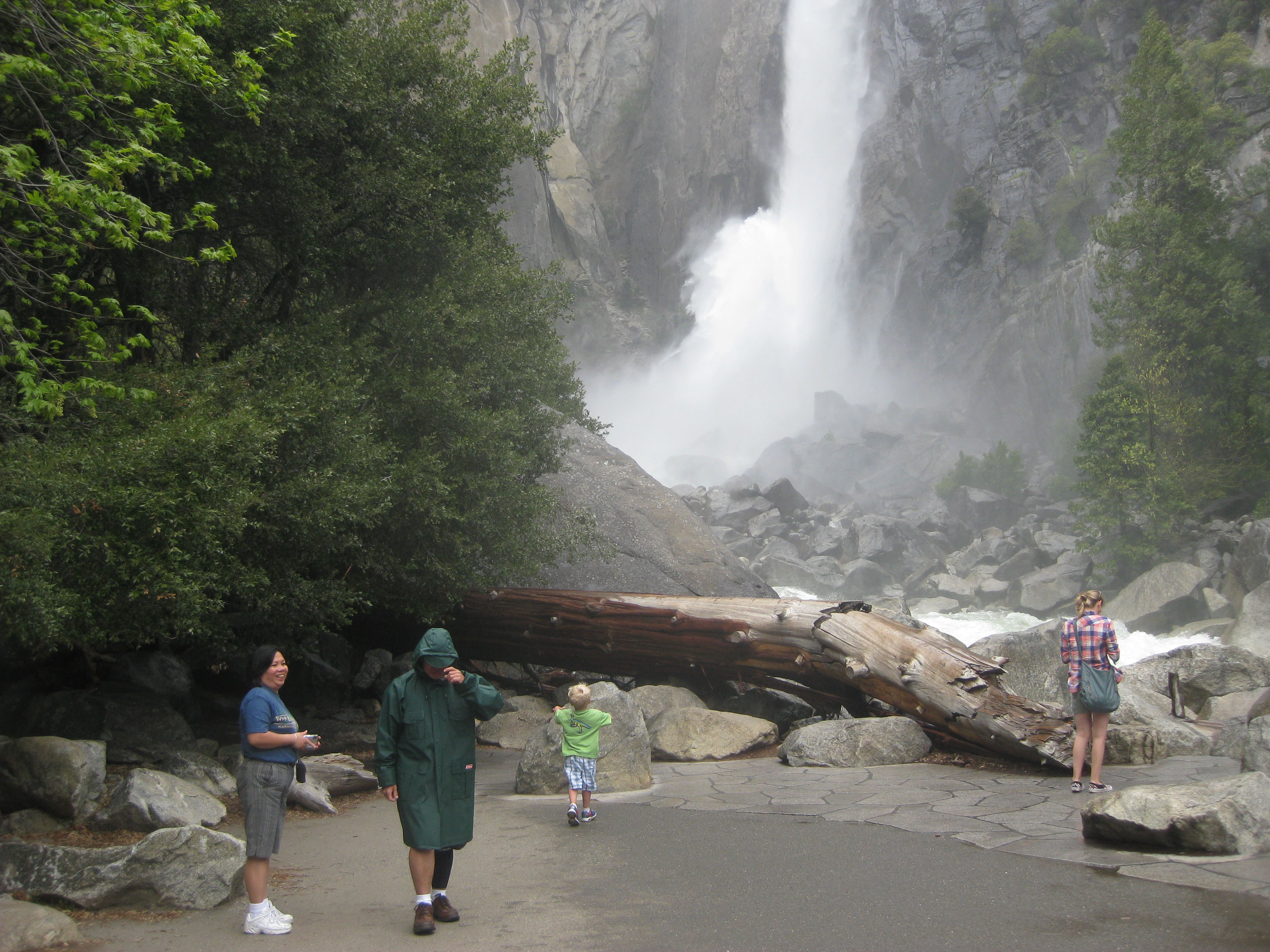
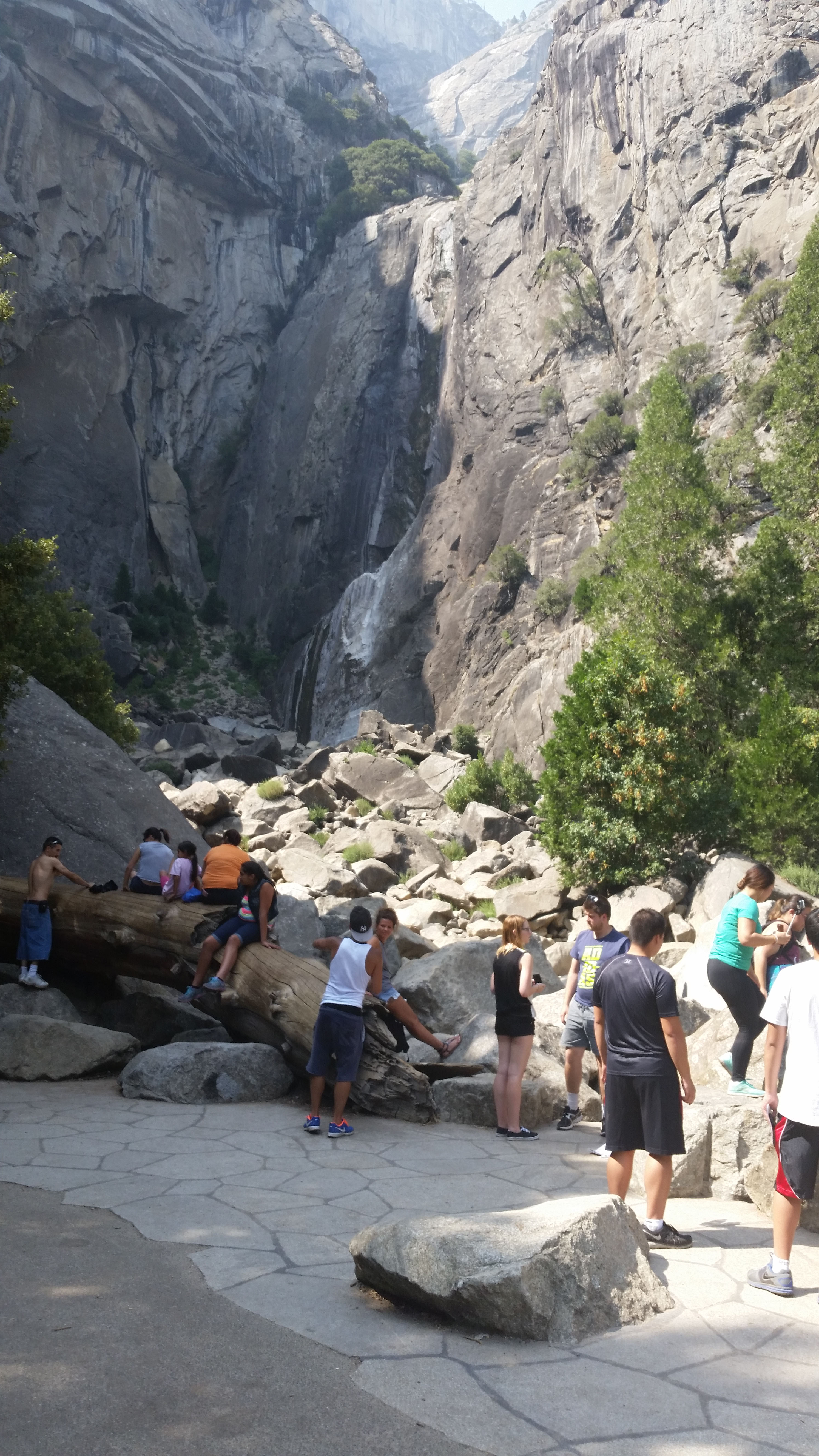
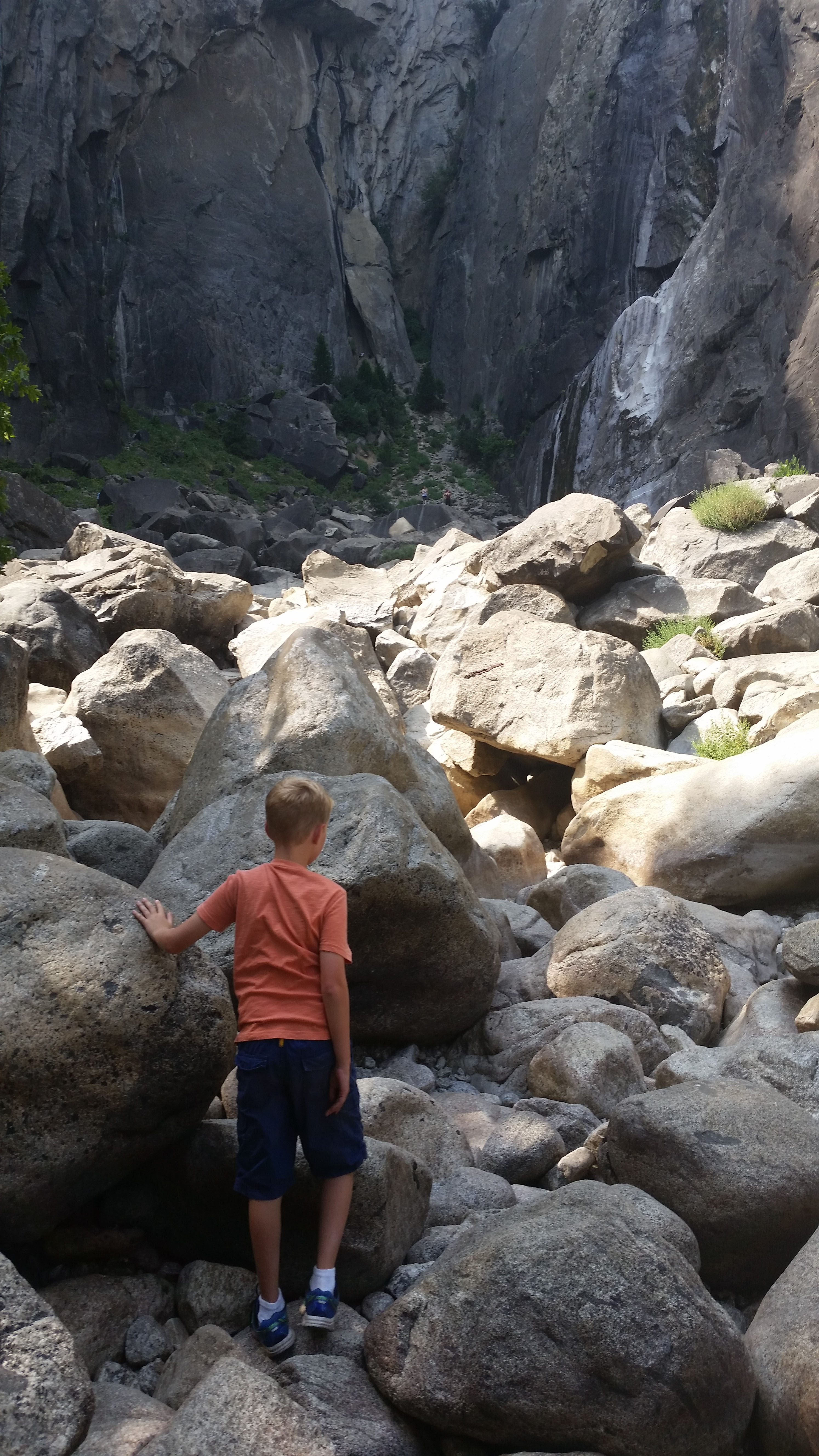
Yosemite First-Time Visitor Tips: Number 3: Know What You Want to Do
Yosemite has all kinds of outdoor opportunities. However, most of these we recommend for experienced repeat visitors. First-time visitors, especially those with pre-teen children, can do Yosemite in a day or two (two is better). This includes several hikes that will get maximum views.
Basically, for Yosemite newcomers, there are three major attractions: Yosemite Valley, Glacier Point and Mariposa Grove. Glacier Point overlooks Yosemite Valley and has great views, including the best views of Half Dome. Depending on where you are coming from Glacier Point will likely be your first or last stop. If you enter the park from the south you probably want to go to Glacier Point first. Coming from other directions you can visit Glacier Point before or after you go to the valley.
Note that while Glacier Point is a stones throw from Yosemite Valley, the actual drive is 30 miles. You can hike a four-mile trail from Yosemite Valley to Glacier Point (or vice versa), but that is not recommended for first timers. The drive will take at least an hour, and in heavy traffic can take far longer. Despite the distance, consider Glacier Point high on the must-do list. This is despite the fact it is basically a stop and take a few pictures/have a picnic spot.

Of course, Yosemite Valley is the primary must-do for Yosemite first timers. Yosemite is huge, but the actual Yosemite Valley portion is a narrow 7-mile long canyon, surrounded by 3,000 feet high granite walls. No matter which way you come into Yosemite you will be funneled into the one-way loop route around the Valley near Bridalveil Falls.
Speaking of Bridalveil Falls this should probably be your first stop, assuming it isn’t too crowded. This is a great waterfall right by the roadside. A short hike takes you to the base where you can get wet from the falls in spring and summer. However, this is one of the falls that runs year around (usually).
Beyond Bridalveil Falls, your next step is to find parking. The National Park Service runs a shuttle around Yosemite Valley and you should definitely take advantage of this free service (included with park admission). Usually we park in the large parking areas near the Yosemite Valley Visitor Center. Seven of the 20 shuttle stops are near this location.
The Visitor Center and Yosemite Village have all kinds of services and also some exhibits. It is also a short walk or shuttle ride to Yosemite Falls. Yosemite Falls is one of the park’s iconic sites. When it is at full flow you will get wet right from the walking path and can not get much closer. When it is fairly dry, you can hike up the dry river bed to the bottom of the falls (this involves ignoring the warning signs telling you not to do this).
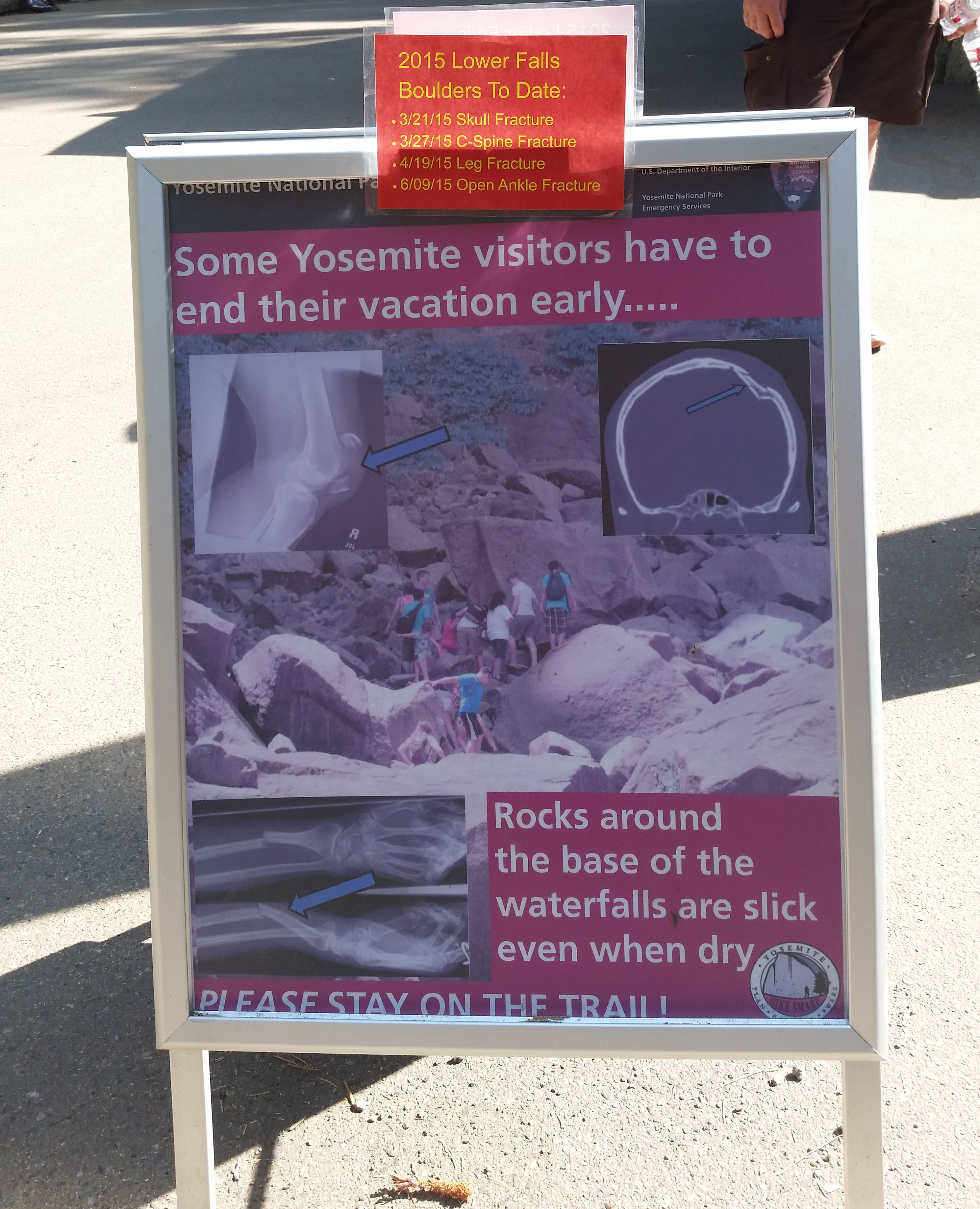
It is possible to hike up to the top of Yosemite Falls, or even to the halfway point. However, we do not recommend this for first-time visitors, especially those with children. If you are looking for a more intensive hike, the best one for first-timers is to take the shuttle to stop 16 and hike the Mist Trail to Vernal Falls.
The Mist Trial to Vernal Falls is a 1.5 mile uphill hike with an elevation gain of 1,000 feet. When you get to Vernal Falls you can either turn around or walk another 2 miles to Nevada Falls. Fun Diego Family went with a 4 and 5-year old. I ended up carrying the 4-year old most of the way while the 5-year old was on her own. Needless to say when we got to Vernal Falls the 4-year old was crying to go on while the 5-year old (and dad) was crying to go back. The final part by Vernal Falls requires climbing up slippery stairs carved in the stone.
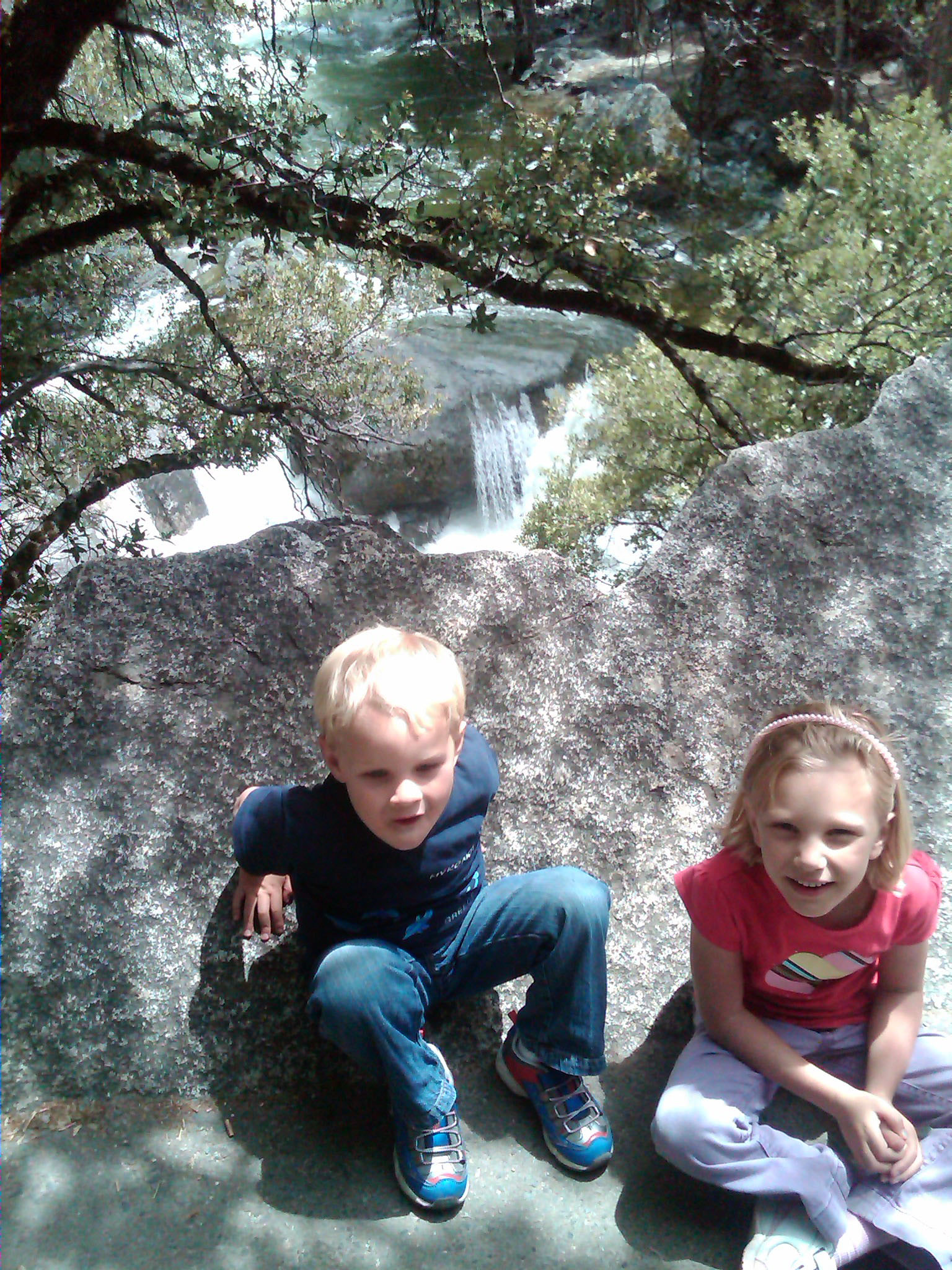
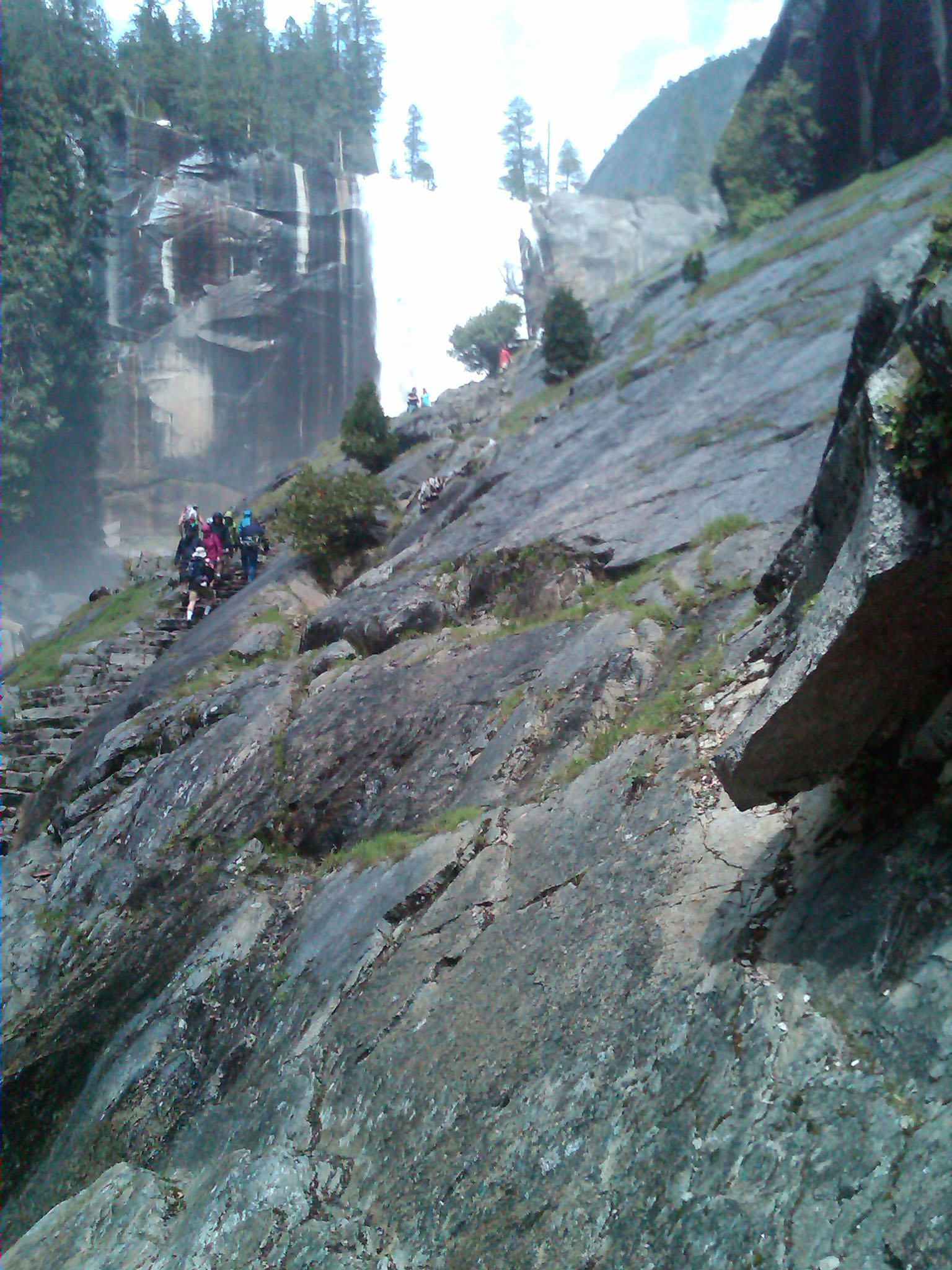
The Mist Trial beyond Nevada Falls continues on all the way up to Half Dome. This is definitely not something for first-timers and requires permits. Overall between Bridalveil Falls, Yosemite Falls and the Mist Trial you will get a great full-day workout in Yosemite. It is possible to do all this (but probably not Glacier Point) in one day (we have) but to fully enjoy the park aim for two days.
Eating in Yosemite Valley is typical expensive tourist/amusement park grub. The one exception is the Majestic Yosemite Dining Room in the Ahwahnee Hotel (renamed the Majestic Yosemite Hotel in 2016 because of a trademark dispute). We have had a good lunch their many years ago, but it is very expensive and has a dress code. Current Yelp reviews are not that great.
The other major attraction for first time visitors is the Mariposa Grove which has some of the world’s largest sequoia trees. Mariposa Grove was closed for three years until June 15, 2018. This means it is likely to be crowded for a year or so after reopening. The grove is 37 miles from Yosemite Valley and because the 30-mph speed limit is strictly enforced is usually a minimum hour and a half drive. Unless you are going through the south entrance Mariposa Grove is probably not a must see.
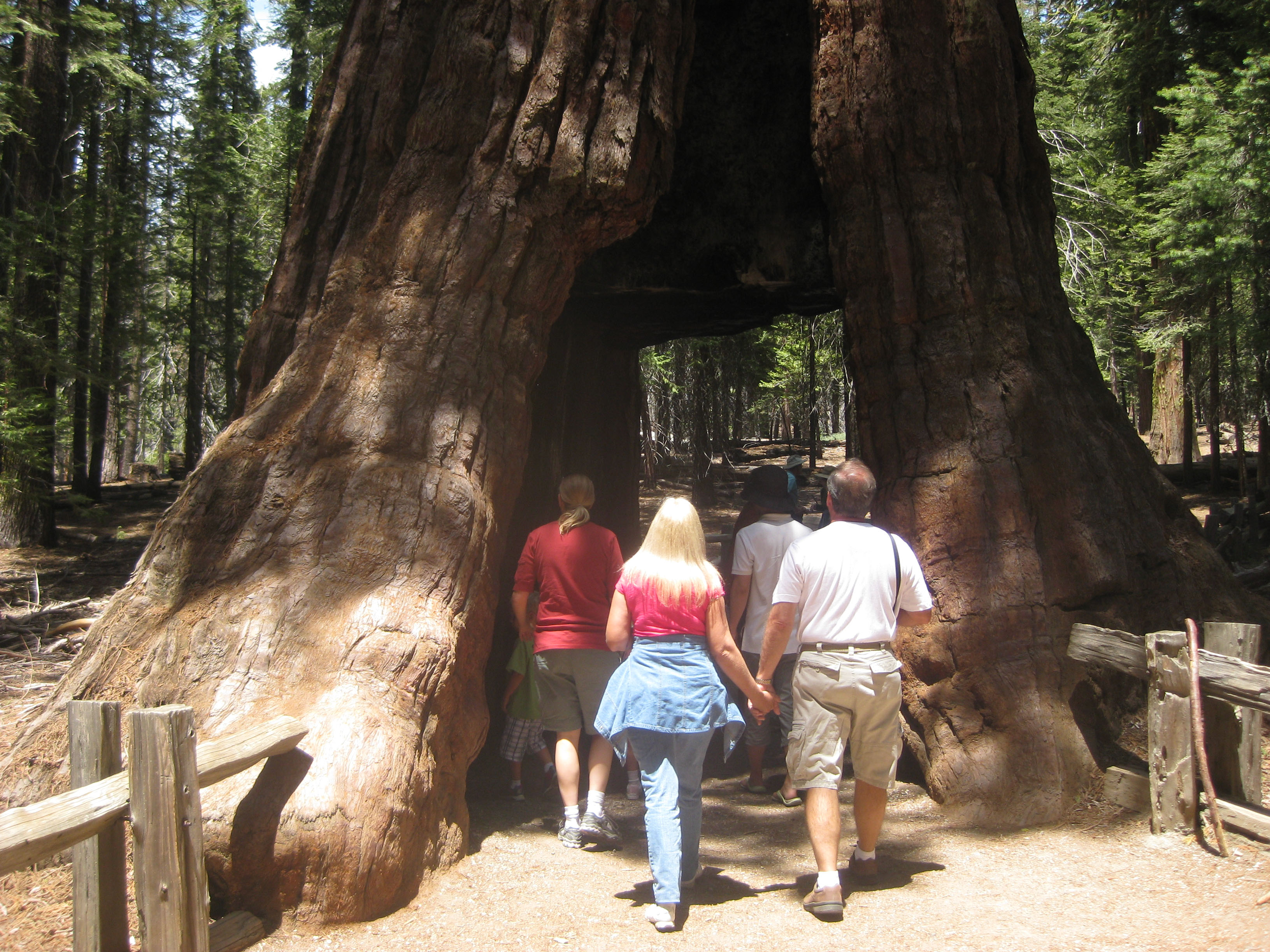
This leads to our final two points, knowing where to stay and visiting Kings Canyon/Sequoia National Parks to see sequoias.
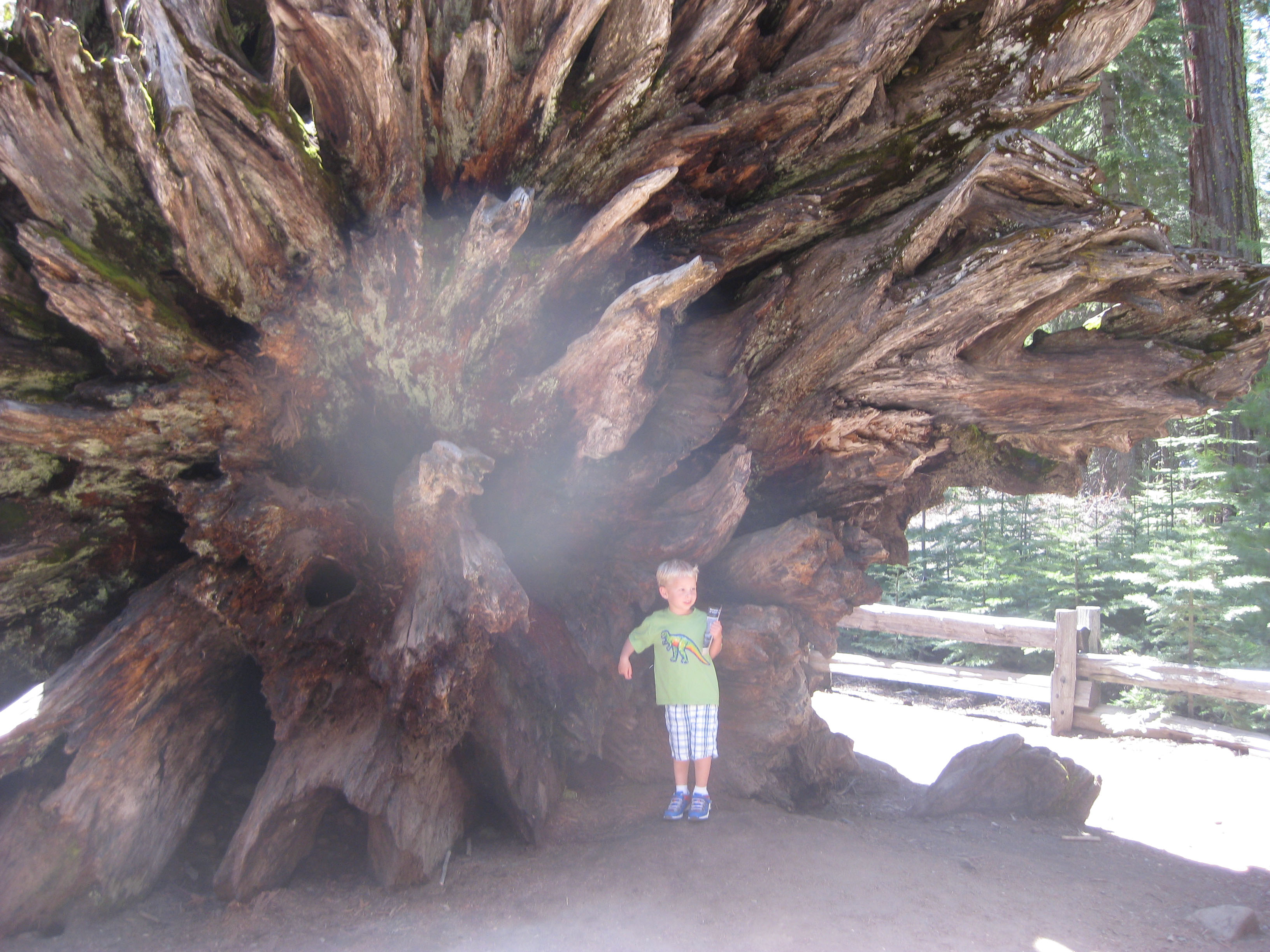
Yosemite First-Time Visitor Tips: Number 4: Know Where You are Staying
Our activity guide above was for a basic one or two-day visit. Of course, there will be all kinds of other activities and adventures in Yosemite. Assuming you are staying multiple days, you can consult the guide you receive at the entrance highlighting many of the daily and nightly activities, including ranger programs. In this case, the big issue is understanding the logistics of getting back and forth from your lodging.
There is lodging in Yosemite Valley including the luxury Majestic Yosemite Hotel and the motel like Yosemite Valley Lodge. Housekeeping Camp offers some basic three-sided structures with a canvas roof. At under $100 this is a good option for those that like camping, but they fill up very fast. We have rented condos at the privately owned (but inside the park) Yosemite West. This is about 45 minutes from Yosemite Valley and 20 minutes from Glacier Point.
Most first-time visitors will likely stay outside the park, and the main advice we can give is to make sure and adjust for the commute. Fun Diego Family usually comes from the south and likes to stay in Oakhurst. It is further outside the park, but really that only adds 15 to 20 minutes to what is already going to be an hour and a half drive from the south entrance to Yosemite Valley. Just like living in Los Angeles or Washington DC, commute time and rush hour is a major consideration for visiting Yosemite.
If you want to stay right by the south entrance Fish Camp is good option. TripSavvy has some good lodging suggestions for this area. Visitors coming from the San Francisco Bay area have quite a few towns to choose from including Groveland, El Portal, Midpines and Mariposa. Once again TripSavvy has some good guides to the towns on the 140 entrance and the Groveland 120 entrance.
Note, there is the Yosemite Area Regional Transportation System (YARTS) that will take you from most of the small towns into Yosemite Valley. Personally, I always drive into the park but also we don’t go during peak season. If I every got a crazy urge to go to Yosemite in mid-summer I would seriously consider YARTS.
It should also be noted that staying further out in places like Fresno, Merced or Sonora can be reasonable. Prices may be cheaper and lodging easier to find. Basically, you will not hit slowdown until you get near Yosemite, so you will not necessarily lose much time. Just note that for anywhere outside the park allow for an hour each way to Yosemite Valley, best case scenario. A bad day in June or July you hit a 4 hour+ trip from the park entrance to Yosemite Valley.
That leads to our final point.
Yosemite First-Time Visitor Tips: Number 5: Consider Kings Canyon and Sequoia National Parks
As mentioned in our guide, it is possible for a first-time visitor to Yosemite to do the main sites in a day or two. If you have come all this way, it would be a shame if you do not also consider a trip to nearby Kings Canyon and Sequoia National Parks. For mid-summer visitors we would even suggest possibly skipping Yosemite in favor of these two parks.
Kings Canyon and Sequoia National Parks are, in theory, two separate parks but really they can be considered as a whole. These parks will be the subject of separate guides but in summary, the main attraction here is the giant sequoia trees. The sequoia groves can get crowded, but as a rule of thumb visitors here will be a fraction of what you find in Yosemite Valley. Just note that while a map may show only 140 miles from Yosemite Valley to Sequoia plan on a minimum 3 to 4 hours of driving between parks.
On a final note, if you are planning on visiting multiple national parks on a trip we strongly recommend the annual America the Beautiful National Park Pass. For $80 a year this allows entrance to most national parks for a year (exceptions include places like Alcatraz). Most national parks charge per vehicle so pretty much an entire family (or however many people you can jam into your car or RV) can get in on one pass. Note U.S. Military get in for free and people over the age of 62 get a lifetime pass for $80. If you are lucky to have a fourth grader you can get a free pass that works for the entire family.

